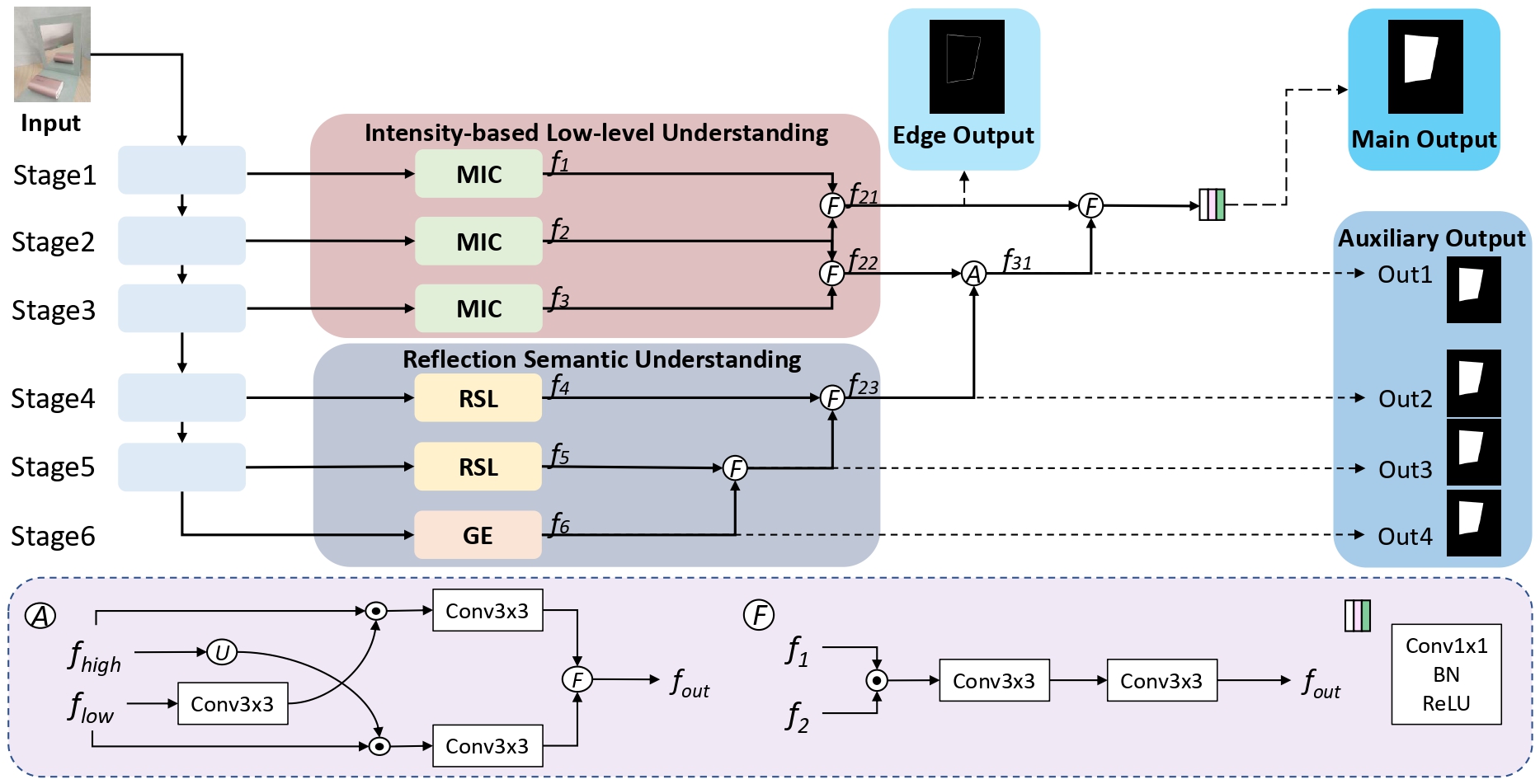Efficient Mirror Detection via Multi-level Heterogeneous Learning
We present HetNet (Multi-level \textbf{Het}erogeneous \textbf{Net}work), a highly efficient mirror detection network. Current mirror detection methods focus more on performance than efficiency, limiting the real-time applications (such as drones). Their lack of efficiency is aroused by the common design of adopting homogeneous modules at different levels, which ignores the difference between different levels of features. In contrast, HetNet detects potential mirror regions initially through low-level understandings (\textit{e.g.}, intensity contrasts) and then combines with high-level understandings (contextual discontinuity for instance) to finalize the predictions. To perform accurate yet efficient mirror detection, HetNet follows an effective architecture that obtains specific information at different stages to detect mirrors. We further propose a multi-orientation intensity-based contrasted module (MIC) and a reflection semantic logical module (RSL), equipped on HetNet, to predict potential mirror regions by low-level understandings and analyze semantic logic in scenarios by high-level understandings, respectively. Compared to the state-of-the-art method, HetNet runs 664$\%$ faster and draws an average performance gain of 8.9$\%$ on MAE, 3.1$\%$ on IoU, and 2.0$\%$ on F-measure on two mirror detection benchmarks.
PDF Abstract
